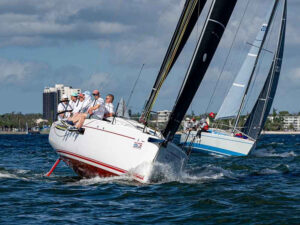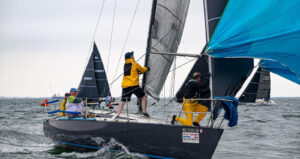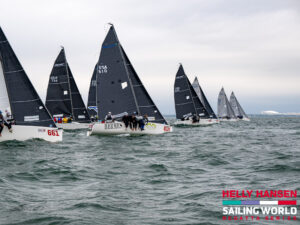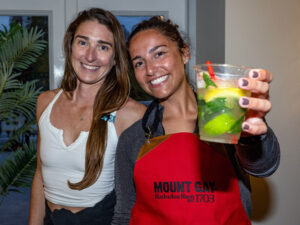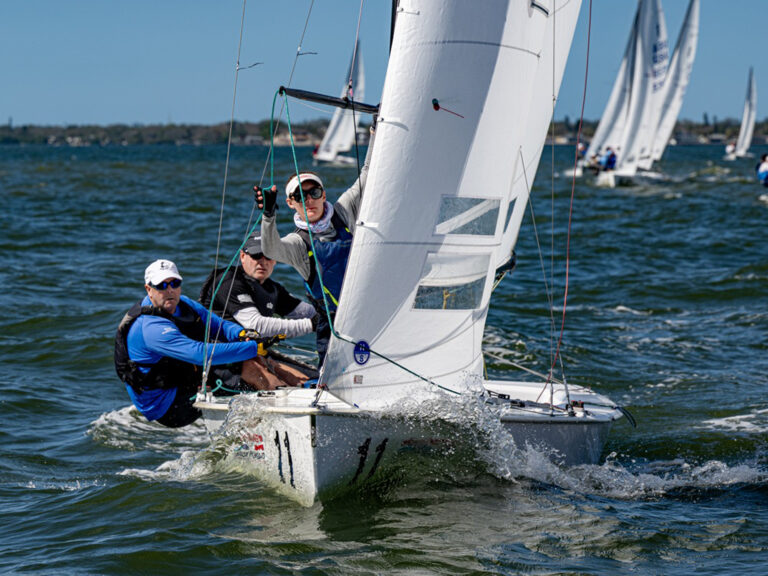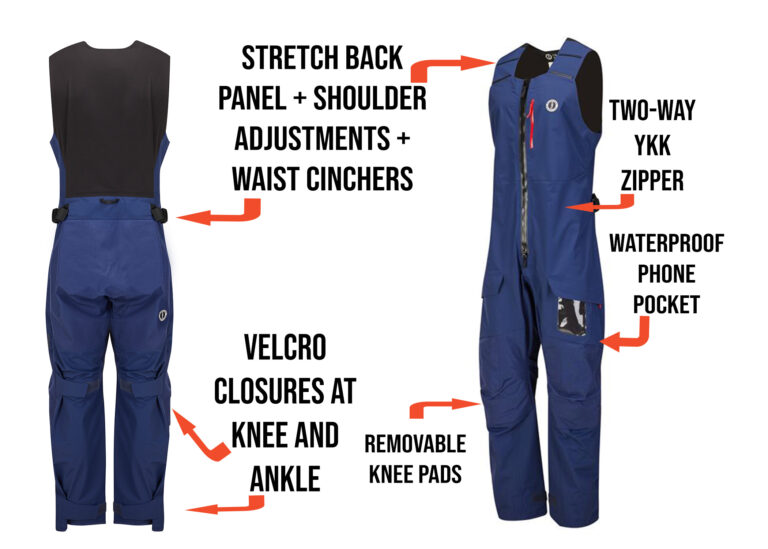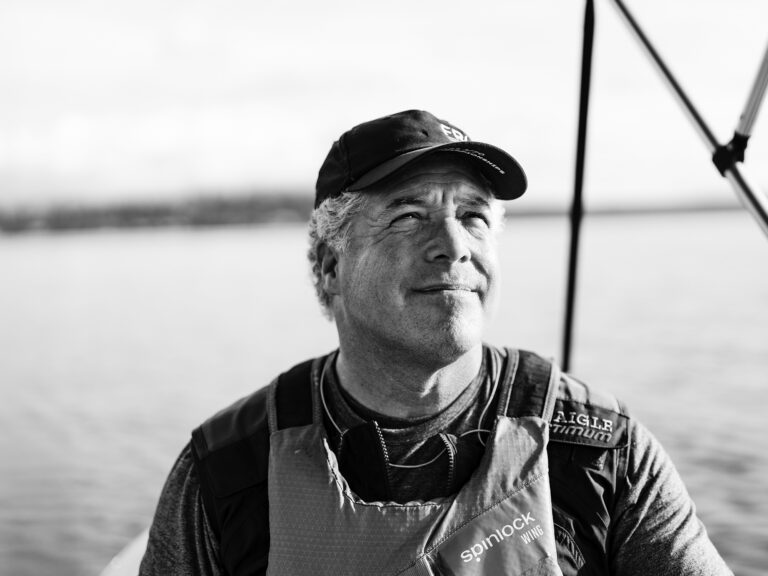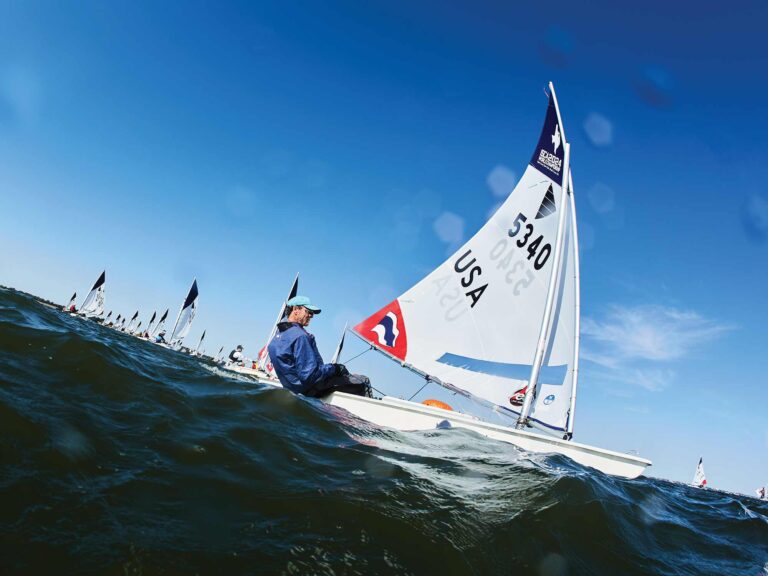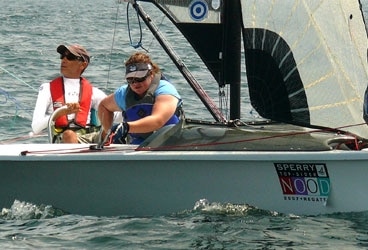
Nick Scandone drives the Skud 18 while Maureen McKinnon-Tucker takes care of all the crewing responsibilities.
In October, Nick Scandone and Maureen McKinnon-Tucker will hope to win every race in the 2007 U.S. Paralympic Trials in Newport, R.I. When a Paralympic berth is on the line, why leave anything to chance? At the 2007 Sperry Top-Sider Marblehead NOOD Regatta, however, McKinnon-Tucker was happy to have some competition pushing her and Scandone throughout the regatta. The Skud 18, a two-person skiff that will be make its Paralympic debut at the 2008 Games in Qingdao, is a relatively new boat and learning its intricacies has been a team effort for the four U.S. teams that have been sailing the boat regularly. Scandone, a former Rolex Yachtsman of the Year, and McKinnon-Tucker were tied with Scott Whitman and Julia Dorsett going into Sunday’s final race. Scandone and McKinnon-Tucker held on for the win in the race, and the regatta. Sailing World: You’re all vying for a paralympic berth. How has the learning curve been?Maureen McKinnon-Tucker: It’s been a pretty steep one. The boat has a lot of features like the 49er or the 29er, because its designed by the same person [Julian Bethwaite, who designed the Skud 18 along with with Argentinean naval architect Martin Billoch and Access Dinghy’s Chris Mitchell]. But it’s really great to be sailing a performance-oriented boat that is designed for able-bodied and disabled people to sail. The boat planes downwind, and we’ve been able to get it go pretty darn fast in some nice wind and trailing waves. How about your team’s development relative to other boats? You won this event, but it seemed like it was pretty tight.We really needed to work for it this time. Our last event we won 10 races out of 11. This one we had to work for considering we came in tied this morning and came out first in the end.What makes the difference in these boats? When someone’s winning versus not winning, where do you guys see the discrepancies?I would say that it’s most visible downwind. It’s easy to sail too hot to get the speed, but then you end up sailing so much distance. The Paralympic Trials are in October, what does your schedule look like leading up to them? My work is not going to see me too much for the next three months. In August, the third week is developmental disabled clinic, down in Newport, the Clagett regatta, and then from there we go to the Worlds. That’s a really important regatta for all of us because that’s where we qualify the country for the Paralympics. I had the fortune of qualifying the United States for the Sonar class in Athens. Nick’s been fortunate to already qualify the United States in the 2.4 meter, the class he just left, last January in Australia. This event will determine the Sonar and the Skud 18 berths. Each one of the 5 U.S. boats are vying for that honor. Additionally, one month after that we roll into the US trials right after that and then we’re all trying for the exact same spot. How do you guys divide the responsibilities on the boat? Does Nick primarily steer the boat and you handle all the sails?Presently, the class requirement is to have a very disabled person steering the boat. Often their hand strength and dexterity aren’t there and they can only hold the joystick tillers, that go fore and aft, with a little bicep ability. In our particular boat, Nick can do the vang in an emergency and he can also steer. In some boats the skipper can only steer simply because they don’t have the hand dexterity to do any lines.I imagine that leaves a lot of work for you then? You’ve got the spinnaker pole, the halyards, everything.The old saying of the one-armed paper-hanger is very much the common phrase among us in the trimmer’s seats. We’ve got everything else-vang, outhaul, cunningham, forestay tension, jib, jibsheets, main, spinnaker, retrieval lines. Getting around a mark, there’s so many things to remember that if you don’t do it in sequence you’ll totally mess it up.It sounds like it’s something you enjoy, the challenge of sailing a performance boat.Of course. The boat is so much fun downwind. It really, really goes fast downwind. You pay the price for it upwind, but sailing downwind is great in these boats, with the planing factor in 12 knots of wind.

